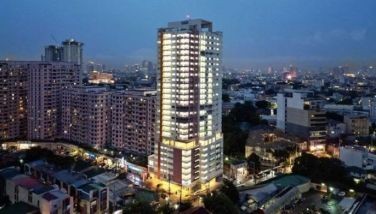Toughness on the Inside
Until I was diagnosed with scoliosis, I did not realize what a wreck I was from within. It was not a nice thing to see. X-ray pictures showed my spine had an 18-degree angle to the right and the spaces in-between my bones were twisted.
Scoliosis is a disorder that affects the spine. It is not a disease. It is a physical condition where there is an abnormal curve in the spine. When viewed from side to side, the spine has normal curves and a normal spine should look straight when looking from the front. People with scoliosis, like me, develop additional curves to either side of the spine and the bones are twisted on each other. The Greeks define scoliosis as a crooked spine.
In most cases, scoliosis is painless. Scoliotic patients don’t really know they have crooked spines and can actually lead normal, productive and active lives until some kind of a “wreck” happens to them or people see they have imbalance shoulders and back. Strangely, even with modern medicine, physicians and researchers are still baffled as to what causes scoliosis.
Although scoliosis is painless, a patient can suffer lung and heart problems and difficulty in breathing when a crooked spine is not treated. This is because the spine holds the rib cages that protect the heart and lungs and when these are abnormally curved, everything else goes haywire.
Because I lead an active life and a regular gym-goer I easily dismissed stabbing back pains as muscle sore. It was when the pains recurred and I started having bouts of fever that I called for an appointment with my doctor. A chiropractor was my physician of choice.
Two-worded advice.
After studying x-ray results, chiropractic physician Serry Alfonso Pizarro explained what was wrong with me. But before he could begin explaining my rehabilitation, he gave a two-worded advice: Back Off. That is, back off and rest easy from workout until my spine was strong and fully rehabilitated. He said that while the spine may not be straightened or zero-curve, rehabilitation can lessen and stop the curve from getting worse. There was pun to that advice: I needed to get the pain off my back.
Dr. Pizarro and his team of therapists structured a treatment protocol for correction that included spine adjustment, myotherapy and physical therapy. The procedure was to relax the muscles surrounding the spine with deep tissue massage to facilitate bone adjustment. One thing about my condition is that my scoliosis had something to do with muscle imbalances. Some of the muscles surrounding my spine were too strong while others were stretched and weakened that these worsened the curvature. It was by relaxing the muscles first that made it facile for Dr. Pizarro to adjust my spine.
Rehabilitating the spine is much like reconstructing the structure of a building. Only that with the human body, bones are moved in their correct places, one by one. It was a humbling, pretty painful experience that having been told to back off from gym life would have been uncalled for. As the spine is rehabilitated and bones are adjusted, the body signals the brain to make the patient sleep. In a sense, sleeping became part of rehabilitation. The more I slept, the more my body responded to healing.
Functional mode.
But it is one thing to rehabilitate and still another to put a rehabilitated spine in functional mode. One-on-one fitness trainer Arnel Catalan attended to where rehabilitation ended. As my personal trainer, Arnel structured a regimen that incorporated scoliosis exercises and stretching to strengthen the bones and make the spine function in its rehabilitated state. Again it was no walk back to the gym. Arnel had to make sure the curve on my spine is decreased while balancing the strength, stretch and dexterity of my muscles (especially those surrounding the spine) with endurance and weights training.
Because I am pianist, I had difficulty of movement on the piano immediately after rehabilitation. The spine is connected to the bones on the wrists and fingers and so my wrists had to get used to a rehabilitated spine. It was Arnel’s job to restore me to performance mode by making my wrists supple while enhancing finger dexterity.
What is peculiar about these treatment modalities is that Dr. Pizarro and Arnel never got the chance to meet and still have to be formally introduced to each other. But each knew what the other was doing by following up my condition. That my spine is restored to its toughness and my back is in shape is the result of teamwork between personal training and chiropractic medicine. At no instance did I take a pill or pain reliever while going through rehabilitation and training.
Still there is no perfect fit. Even up to now, science has shown that there is no cure for scoliosis. There are only good treatment options including observation, bracing, surgery, rehabilitation and correction. In whatever mode bottom line is, it’s pretty expensive. I paid highly to straighten up the crooked.
- Latest
- Trending























